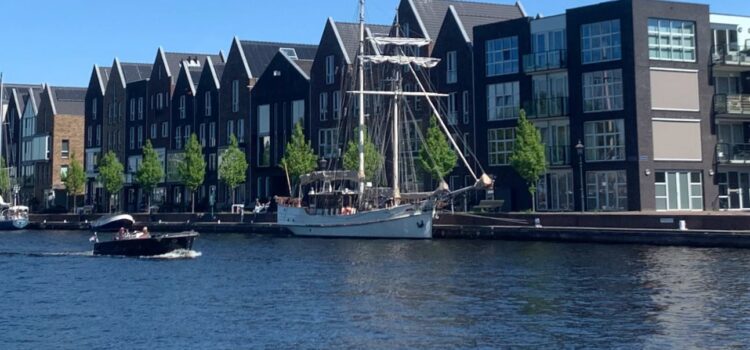

This article is an excerpt from the Shortform summary of "The Hiding Place" by Corrie ten Boom. Shortform has the world's best summaries of books you should be reading.
Like this article? Sign up for a free trial here .
Who was Mrs. Bierens de Haan? How did Corrie ten Boom meet her? Was there a personal connection between Corrie and Mrs. Bierens de Haan?
Mrs. Bierens de Haan was a wealthy woman from the Bloemendaal neighborhood of Haarlem. She knew Tante Jans, Corrie’s aunt.
Read about Mrs. Bierens de Haan and how she helped Corrie create a home for survivors of concentration camps.
Betsie’s Idea for a Survivor’s Home
One day Corrie shared with Betsie her idea to create a home for survivors of the Nazi persecution after the war. It would be a place of healing and love, where the persecuted and terrorized could heal the physical, psychic, and spiritual wounds. Betsie heartily agreed, saying that she wished to show that love is always greater than hate. It dawned on Corrie that while she was talking about helping the victims, Betsie was talking about helping the perpetrators.
Shortly after this conversation, Corrie joined her sister in the “knitting brigade.” She would later recall these weeks working alongside Betsie as the most joyous time she ever spent at Ravensbruck. During their days together, Betsie fleshed out her vision for what God wanted them to do after the war.
They were to operate a house, larger than the Beje, and open it to all the souls whose lives had been destroyed by the concentration camps. In her vision, Betsie could even picture what the house looked like—floors of inlaid wood; a broad staircase; and grounds filled with gardens, where the former prisoners could plant and nurture the flowers, giving them exposure to beauty after years of ugliness. In merely describing this future house, Betsie transported them outside the squalid barracks.
Making the Home a Reality With Mrs. Bierens de Haan
The Beje continued to be a safehouse for the persecuted. Mentally challenged people were being hidden in the house to avoid the Nazi extermination program aimed at these people, deemed to be dangerous to German racial hygiene. Upon her return, however, Corrie found that she had no more energy for underground work. She sensed that God had a different calling for her.
She began preaching in the streets of Haarlem in spring 1945, sharing the message of the unconquerable power of Christ’s love. After one of her preaching sessions, Corrie was approached by the widowed Mrs. Bierens de Haan, an aristocratic woman who lived in the wealthy Haarlem suburb of Bloemendaal. As the two women spoke, Mrs. de Haan shared that her mother had been a friend of Tante Jans, years before. Mrs. de Haan had always admired Tante Jans’s charitable work and Christian writings and had known of the Beje as a place of refuge and Christian charity. And Corrie, too, had known of the de Haan estate as the most beautiful home in all of Haarlem.
Mrs. Bierens de Haan offered the house as the place for Corrie’s home for concentration camp survivors. Here was the beautiful place where Betsie’s vision would at last be fulfilled. Mrs. Bierens de Haan even suggested having the survivors replant the dilapidated and neglected gardens on the estate—just as Betsie had envisioned!
Liberation finally came to Haarlem in May 1945. For the first time in five years, the Dutch flag hung from the windows and the once-forbidden Dutch national anthem played non-stop on the radio. Almost immediately after, the first wave of what would become hundreds of people began making their way to the house in Bloemendaal. Everyone who came was scarred by the war, either physically or psychologically. These were people who had lost husbands wives, siblings, and even children. Many of them had spent years in concentration camps or in hiding.
Sharing the Glory
The house became a place of refuge, where the wounded and weary could heal their psychological wounds and process the experience of their war trauma. Corrie saw it as her mission to tend to all those who had been destroyed by the war—including the perpetrators and collaborators.
Indeed, former NSB operatives had been ostracized and publicly humiliated by their neighbors, who often forcefully shaved the heads of the former collaborators and paraded them through the streets in revenge for the suffering and pain they had caused during the war. Corrie understood this need on the part of survivors for emotional release, but she also knew that even former Nazis were creatures of God, deserving of love and forgiveness.

———End of Preview———
Like what you just read? Read the rest of the world's best summary of Corrie ten Boom's "The Hiding Place" at Shortform .
Here's what you'll find in our full The Hiding Place summary :
- Why devout Christian Corrie ten Boom decided to stand up to the Nazi occupation
- How ten Boom and the Jewish neighbors she was hiding were caught
- How ten Boom survived the concentration camp and left with even stronger faith






